On the 7th of June 1926, a couple of weeks before his 74th birthday, Antoni Gaudí was quite violently interrupted in his journey to church for his daily prayer. He was hit by a tram. If you were there, witnessing the collision, I can fairly confidently say you wouldn’t grasp the significance of the event happening in front of you.
That’s because I’m pretty certain you wouldn’t recognise that the old man being hit by a tram was Antoni Gaudí. I know this because lots of people didn’t recognise him at the time, none of those who came to the aide of the man they thought was a beggar, nor the taxi drivers who refused to take this beggar to hospital, or the policeman who eventually took “God’s architect” to a hospital, where he lay among men who actually were beggars.
But in defence of the people who didn’t recognise him then and in defence of the imaginary you that watched the horrendous accident, two things made it quite tricky to make out who was lying mortally wounded on the street that day. Firstly, Gaudí had no identification on his person, and secondly, he looked a right old state. In his later years Gaudí’s priority wasn’t self-care but the Sagrada Família, which is how he ended up dying a poor man’s death in a poor man’s hospital. He looked like a poor man.
But this poor man is now my favourite architect and since I am in Barcelona I decide to see as much of his work as possible. Saying I have a favourite architect makes it sound like I’m a real building buff, like I can look at a street and tell you whether it’s Gothic or Renaissance or Pre-Gothic or Post-Gothic-Pre-Renaissance or that sort of thing, but this is not the case. I know about buildings only what I know about most things: whether I like them or I don’t.
Gaudí happens to be my favourite architect because he’s pretty much the only architect whose buildings I can look at and go, “oh, yeah, I know who did this,” and that’s not just counting the Sagrada Família, that great hulking unfinished mass.
There’s Casa Batlló, undoubtedly my favourite Gaudí building, known locally as the House of Bones. It does look like bones, in a way, if you ignore the fact that it’s actually blue and green in parts and intensely decorated like most of Gaudí’s stuff. My favourite bits of the building, other than the colour, are the balconies. They look less like bones to me than the top part of a stormtrooper’s helmet, and if you were unclear how little I knew about architecture until now then I think that little comparison might have cleared things up.
Right across the road - that’s the best thing about Gaudí and Barcelona, he did so much work for the city that if you can barely move for his Modernisme - there’s Casa Milà. This has quite a cool roof and a wavy, undulating façade, and it also has lovely balconies, though these look nothing like a stormtrooper’s helmet and so they interest me less.
Its local name is La Pedrera, or the Stone Quarry, and that I think just shows the difference between it and its bony neighbour across the street. It’s unusual but it doesn’t look skeletal. By Gaudí’s standards it’s positively pedestrian, though when it was built it was designed purely as a residential building, something that feels faintly ridiculous when you observe the long line of people now queuing just to have a look inside.
But where did a man like Gaudí live? A man with his creativity could not have lived in an ordinary apartment in some nondescript suburb. For the last portion of his life he actually lived at the Sagrada Família as he dedicated almost all of his time to its completion. But for two decades he lived in what is now the Gaudí House Museum in Park Güell.
It’s here in the museum that I really come to terms with how different Gaudí and I are. I had my suspicions about our differences before my visit, sure. Gaudí was an incredibly religious man. I on the other hand spent a year hanging around with Christians at university mainly because I just liked them, and every time they asked me how my journey with God was going I would say it had “stalled.”
He could also, I’m presuming, define the terms neo-Gothic or Neoclassical, and when hearing them wouldn’t glaze over and pretend to listen to the poor tour guide who’s had to memorise the difference between the two.
But what really hammered home to me why Gaudí and I are really, very different is the fact that he designed chairs. I’m not saying I couldn’t design a chair. Give me a few bits of wood and oh, a few weeks, I could bring to you a chair, or at least something that, if pushed, you could sit on.
I would need every second of those few weeks, though. My whole being would be consumed with the proportions and comfort of the chair and it wouldn’t slip from my thoughts for a single second until I presented you with the end result and you gave your approval. What I could not do is design a chair and have the time to design Casa Batlló, Casa Milà, loads of things in Park Güell, and Sagrada Família, among other bits and bobs. That chair would be the sum of my achievements and, architecturally at least, I would be neither celebrated nor remembered. I don’t think that Gaudí had heard of procrastination.
Speaking of the Sagrada Família, I feel it gets a hard time for not being finished. It is - brace for some more architectural insight - absolutely bloody massive, and besides, they only started building it in 1882. That sounds like a long time ago but Milan’s cathedral took nearly 600 years to finish. Florence’s took 140 and Salisbury took around 100.
Cathedrals, especially ones as intricate and towering as the Sagrada Família, take time. There’s been two world wars, a Spanish civil war, and two major pandemics since they broke ground nearly 150 years ago, so give them a break. They reckon they might be finished by 2040 which is pretty much light-speed when compared with those slow coaches down in Milan.
Saying that, the whole building site situation does get slightly in the way of the religion. It’s hard to feel all holy and pious when there’s a bloke in a hardhat and a hi-vis in your peripheral.
Then there’s the audio guide. I find few things more dispiriting in life than audio guides and the Sagrada Família’s is a long old slog. It focuses on one part of the façade for a while and then, just as you think you must now be moving inside or to another part of the building, the next section starts and it’s talking about another piece of the façade about three inches from the last piece it talked about.
I listen for about fifteen minutes and then decide I simply can’t go on like this and I ditch it. Instead I just walk around staring. Staring at the beautiful stained glass windows, the massive, tree-like interior nave, the towers outside that just keep on going and going.
Staring is the only appropriate thing to do with a building like the Sagrada Família. It may not feel particularly holy, it might not be finished, but it’s unlike any other building anywhere in the world. I find myself standing outside and just staring up at it for minutes at a time. I follow the columns from their base to their very top, an impossibly long distance away, and just think, “Jesus.” Which I suppose is what that old Catholic would have wanted me to think.
Some housekeeping.
If you’d like to discover more newsletters like mine, you can subscribe to The Sample, which curates the best newsletters and sends you those worth subscribing to. You can subscribe through this link. Doing so helps this blog get more readers so please do check it out.


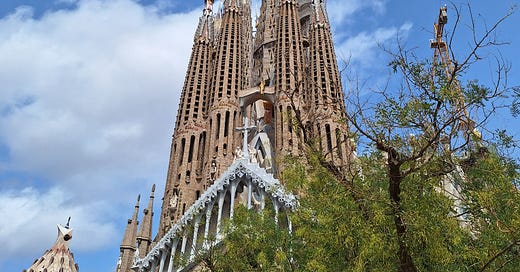



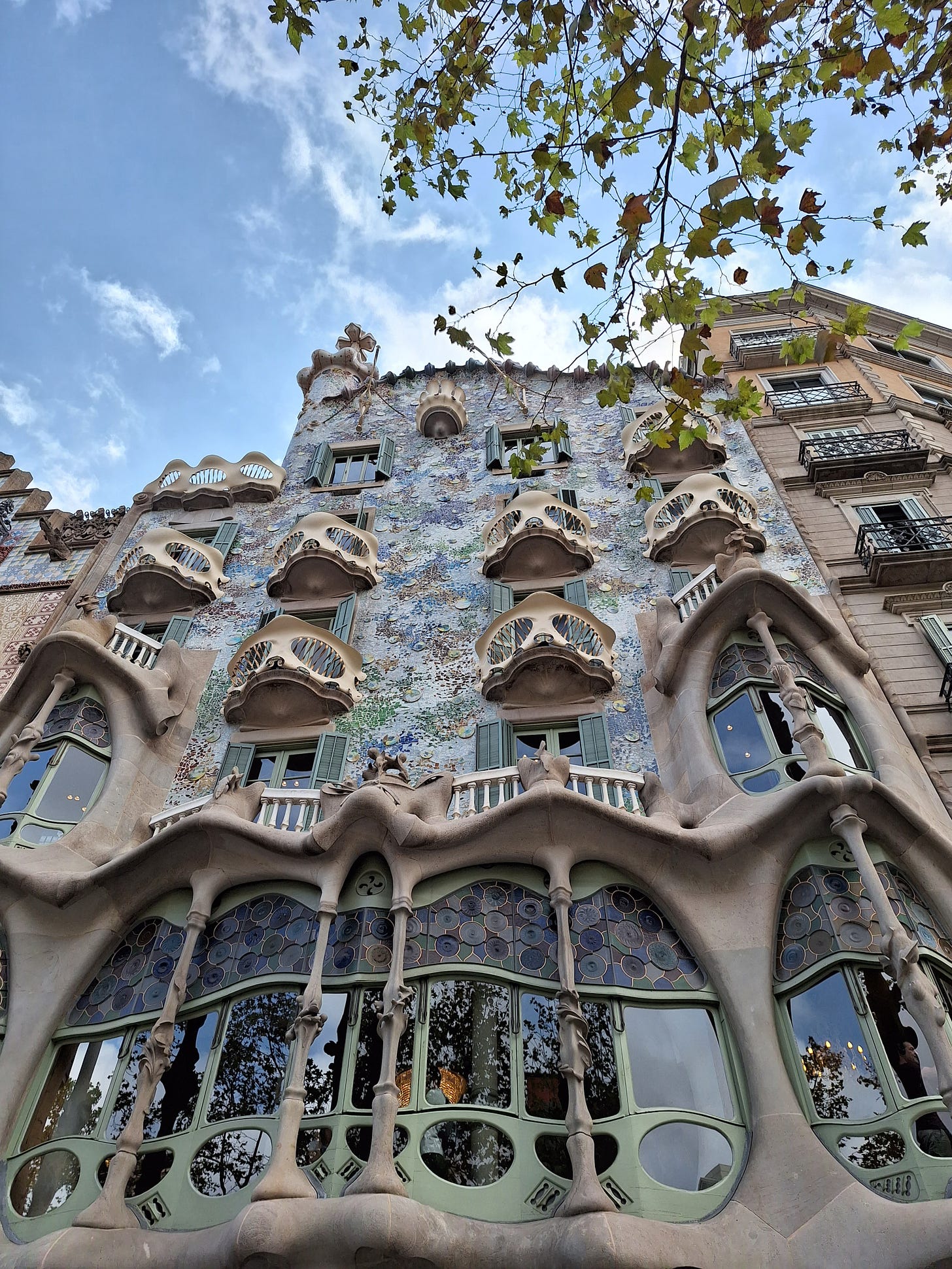
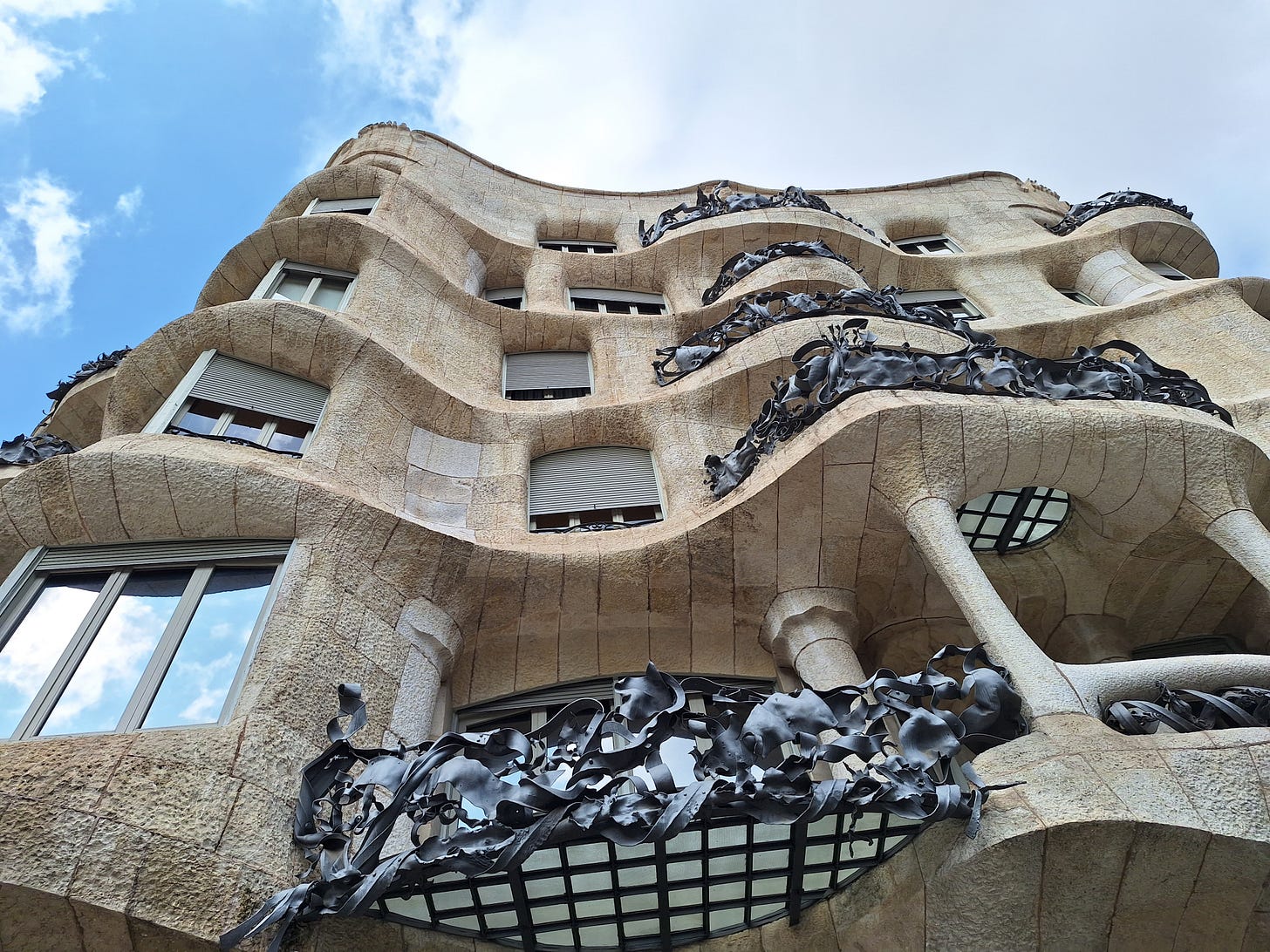
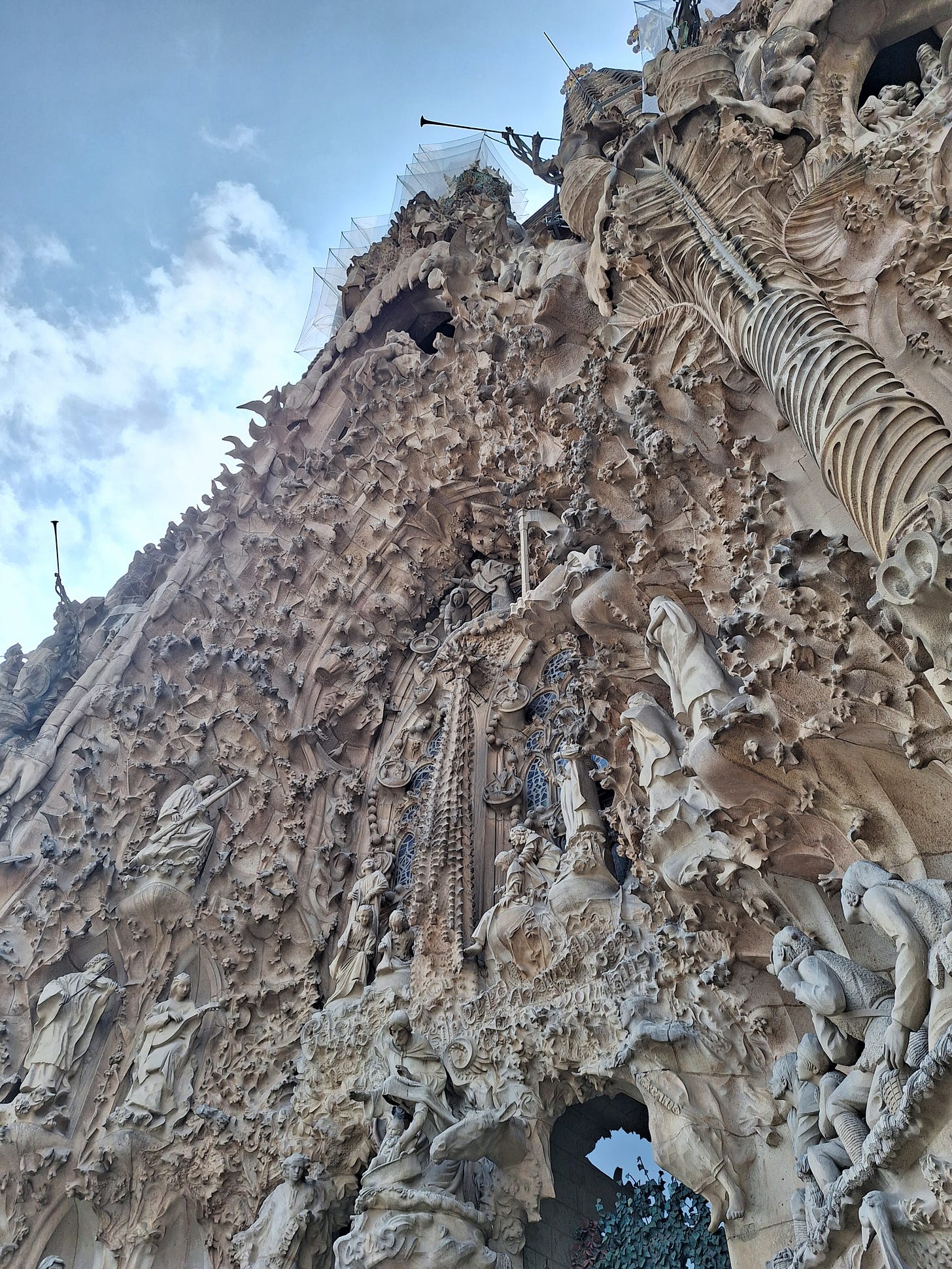
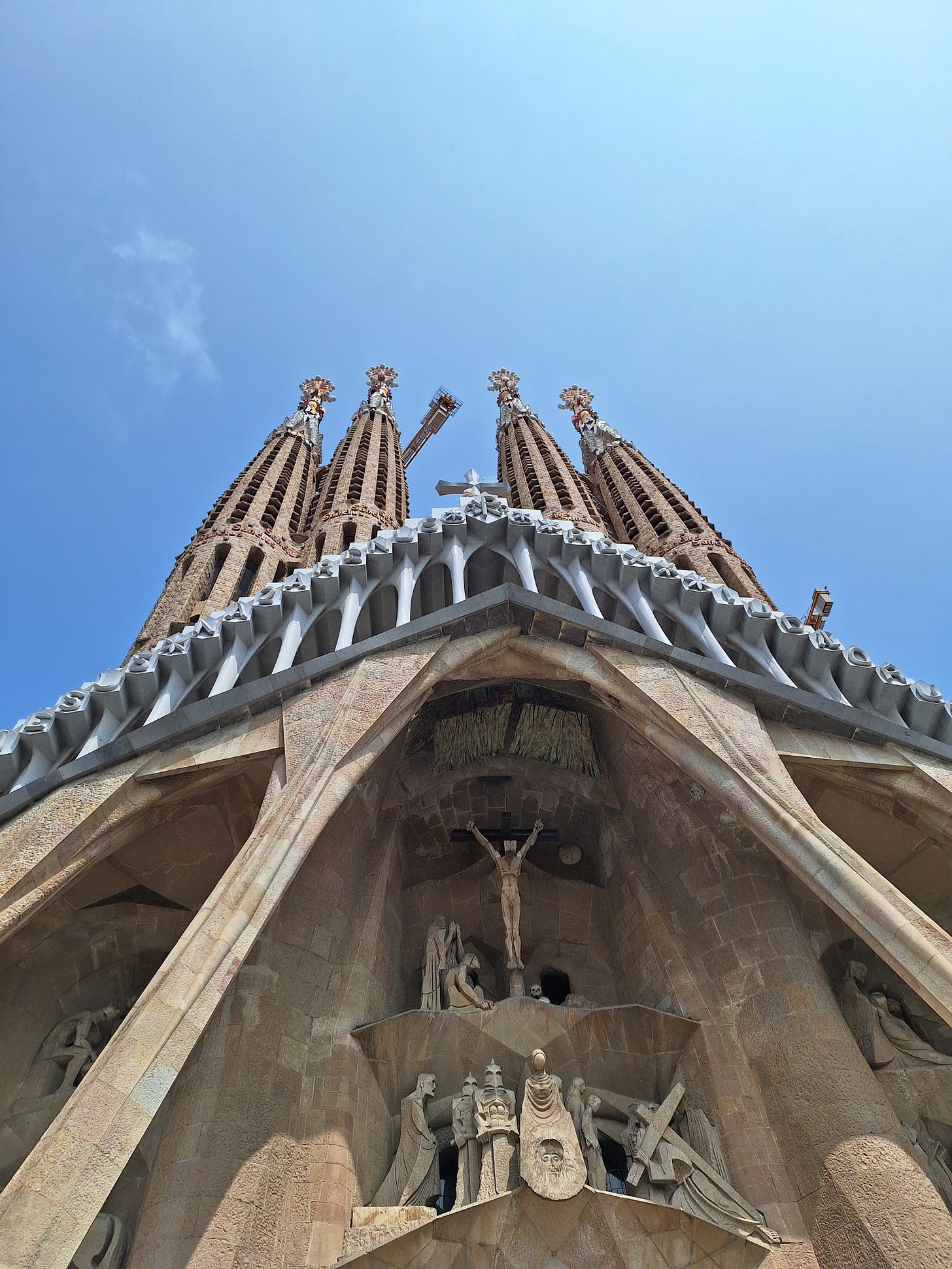
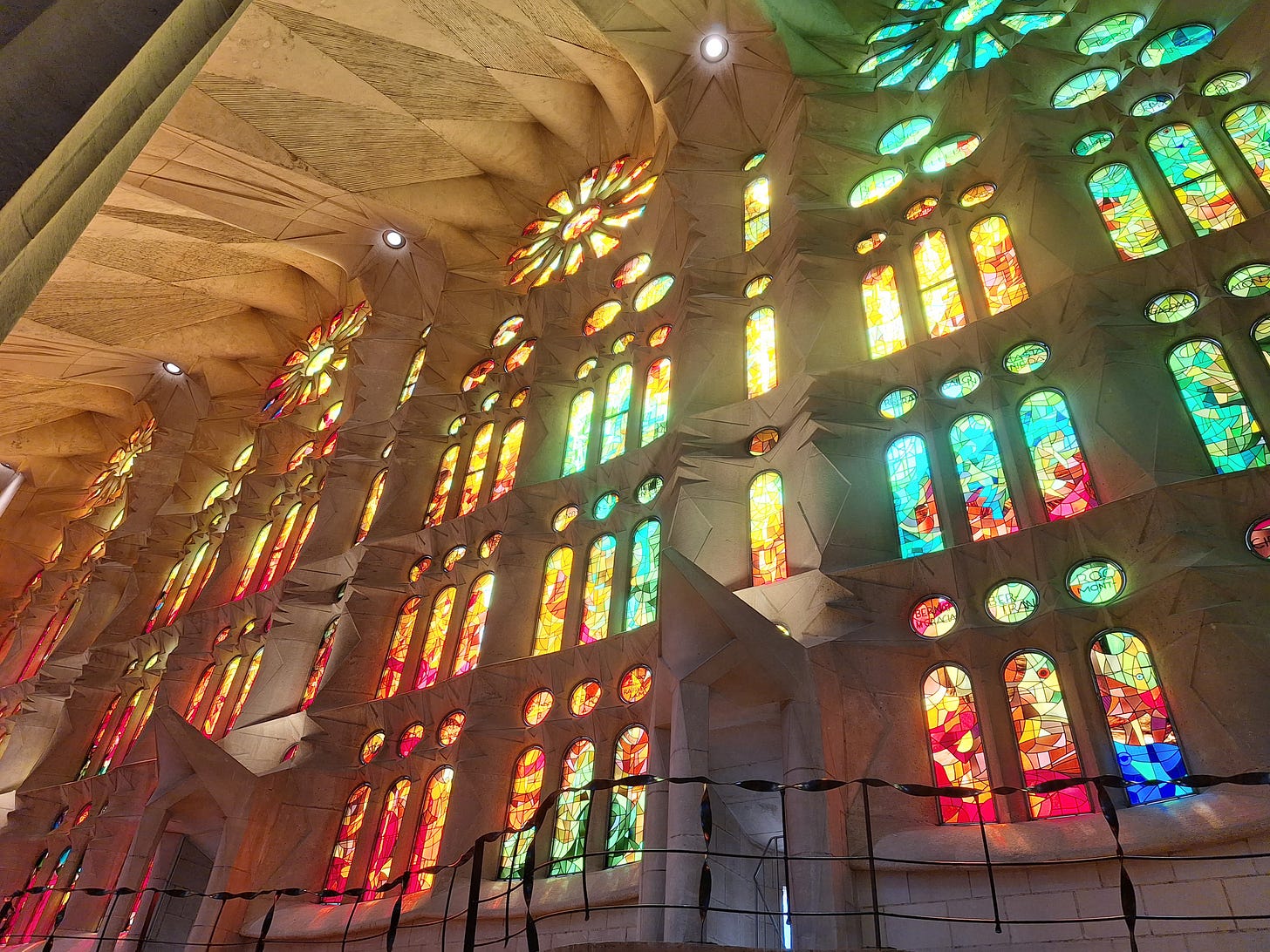
We got a private tour both times we did it and well worth it. Audio guides are soul sucking, except for rick steves ones that are surprisingly funny
I have had the good fortune to see the Sagrada Familia on two occasions about 15yrs apart. The first on the outside only which you could spend practically an entire day exploring. The second time I was able to go inside and there are no other worlds to describe it but truly magnificent and glorious. This is something that should be on everyone's site to visit list.